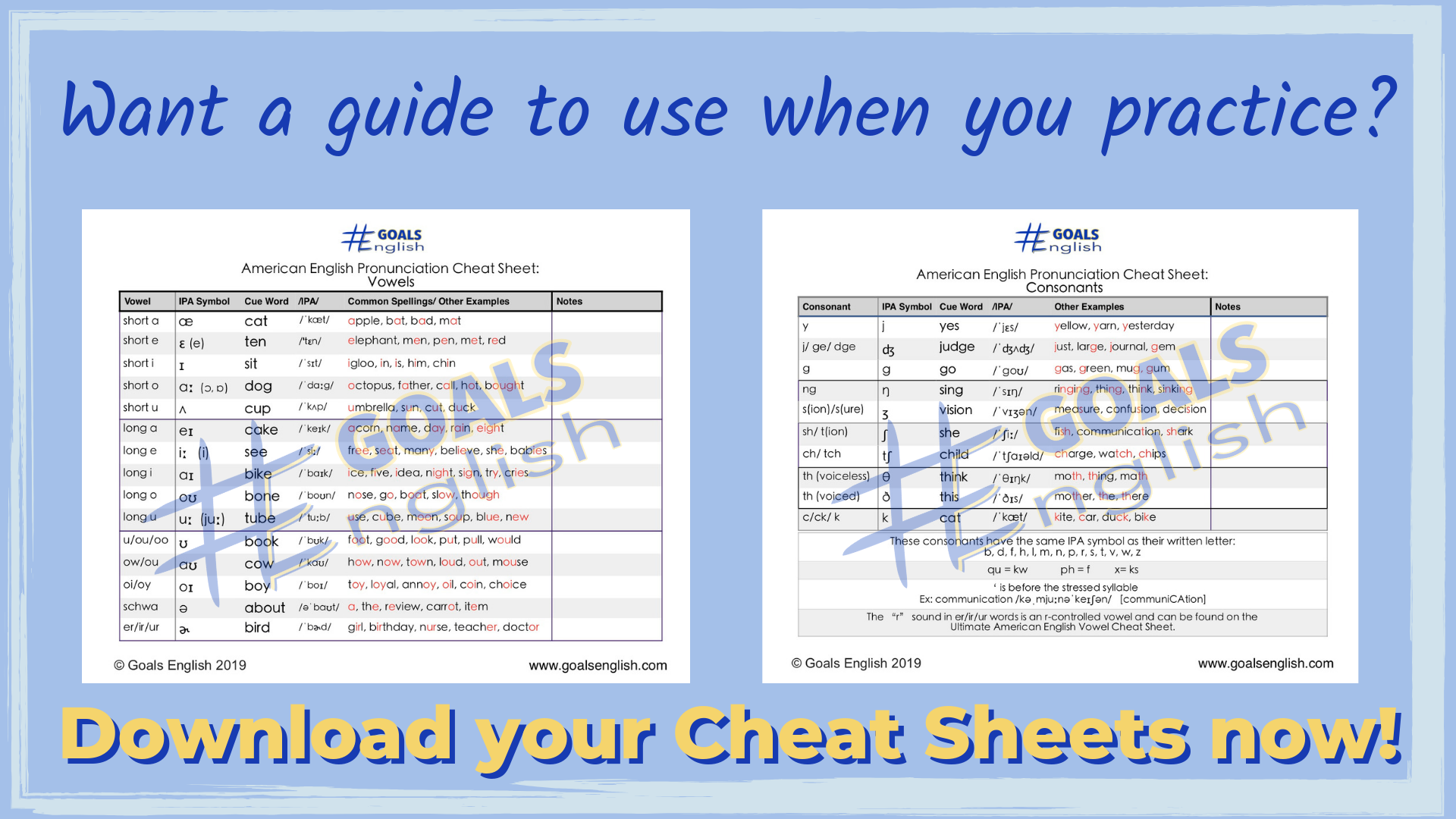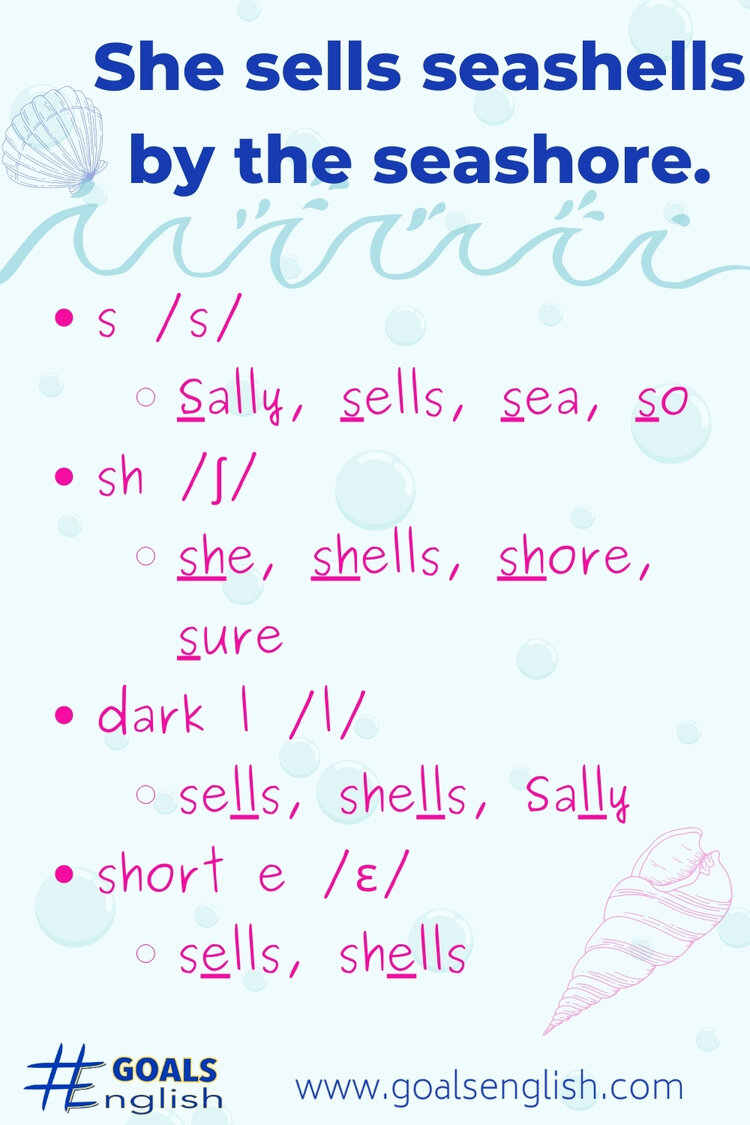3 More Tongue Twisters for Speaking Practice in American English
I love using tongue twisters to teach English pronunciation. Tongue twisters are usually short, and have a focus on just a few important vowel or consonant sounds. In searching for tongue twisters in Portuguese (the language I’m currently learning) I found most videos just read them once or twice and were too fast for me (a beginner) to keep up. That’s why in my own English lessons, I go over each tongue twister slowly, focus on difficult or similar sounds, and then speed up as the lesson goes on. If you enjoyed my last three tongue twisters, keep reading because you’re going to love this lesson!
Sally Sells Seashells - Practice for S /s/ vs. SH /ʃ/
There are a few versions of this classic tongue twister, but one thing remains the same: It’s great practice for differentiating the ‘s’ /s/ and the ‘sh’ /ʃ/ sounds.
Here are three different versions of this tongue twister:
She sells seashells by the seashore.
Sally sells seashells by the seashore.
She sells seashells by the seashore,
The shells she sells are seashells,
I’m sure.
So if she sells seashells on the seashore,
Them I’m sure she sells seashore shells.
Here are the main consonant and vowel sounds you can practice with this tongue twister:
s /s/
Sally, sells, sea, so
sh /ʃ/
she, shells, shore, sure
dark l /l/
sells, shells, Sally
short e /ɛ/
sells, shells
long e /iː/
she, Sally, sea
r-controlled vowel ‘er’ /ɚ/
sure
r-controlled vowel ‘or’ /oɚ/
shore
Watch the full video lesson to hear how all of these sounds are pronounced and to follow along with the tongue twister, slowly at first, and then more quickly:
Whether the Weather- Practice for the Voiced ‘th’ /ð/ and R-Controlled Vowel ‘er’ /ɚ/
This next tongue twister is a theater warm-up and it’s one of my favorites. It has a specific rhythm to it that makes it fun to say and speed up or slow down. With theater warm-up tongue twisters especially, it’s typical to over-enunciate to get the muscles of the mouth, face, and tongue warmed up and ready to speak in large spaces.
Even if you aren’t preparing for a performance, theater warm-ups are a great way to get your muscles used to producing the sounds of American English.
I think theatrical and singing vocal exercises are very useful to students learning English because they are all about speaking clearly and using correct pronunciation (how you say a word) and enunciation (how clearly you say a word). In the video I’ll show you what I mean by “over-enunciating.”
This tongue twister has a couple different versions as well but this is the one I use:
Whether the weather is cold,
Or whether the weather is hot,
We’ll weather the weather,
Whatever the weather,
Whether we like it or not.
Here are the main consonant and vowel sounds you can practice with this tongue twister:
w /w/
whether, weather, we, we’ll
voiced ‘th’ /ð/
whether, weather, the
short e /ɛ/
whether, weather, whatever
r-controlled vowel ‘er’ /ɚ/
whether, weather, whatever
*Note: weather and whether are pronounced exactly the same in the general American accent.
Follow along with the video and see if you can pronounce all of the sounds correctly in this tongue twister:
Red Leather, Yellow Leather- Practice for r /r/, l /l/, the Voiced ‘th’ /ð/ the R-Controlled Vowel ‘er’ /ɚ/
This short and sweet tongue twister is also a classic theater warm up. This is a great one for those that need more practice differentiating between the /r/ and the /l/ sounds, as well as additional practice for the voiced ‘th’ and the ‘er’ sound in just four little words.
This is the tongue twister in it’s entirety:
Red leather, yellow leather.
Yep, that’s it. It seems simple, but try saying it three times fast!
Study Tips:
It’s better to say them slowly and correctly than quickly and incorrectly
Only speed up when you know you are pronouncing the words correctly
Repeat the tongue twisters often, whenever you have a free moment
Record yourself the first time you try, and then several practice sessions later to track your progress
For these tongue twisters to help you, I suggest revisiting them many times until you can perfect them and quickly say them. Practicing is always easier when you make it fun, so make it a game with yourself and see how fast you can say them. You can say them while doing the dishes, driving to work, wherever you are, once you know these tongue twisters you can repeat them to get in your daily English practice! If you’d like some more help with your accent or English fluency, contact me, Monica, to find out more about my one on one lessons.
Have fun and keep practicing!
If you enjoyed this lesson and want to learn more about accent reduction, I always suggest starting with becoming familiar with all of the sounds of American English. To help you study and keep track of the sounds you’re learning, I created a free printable “cheat sheet.” It’s a chart that has the main sounds you’ll need to learn to speak in a general American accent, along with the corresponding IPA symbols, and example words to help you remember. Subscribe for news and updates and you’ll also receive this free download!










